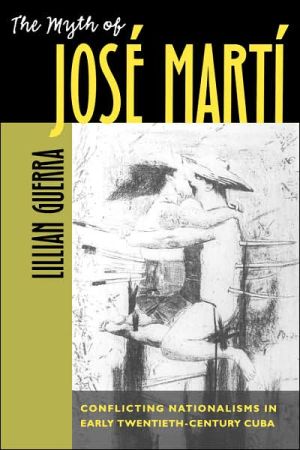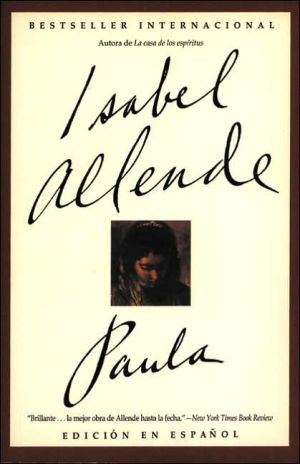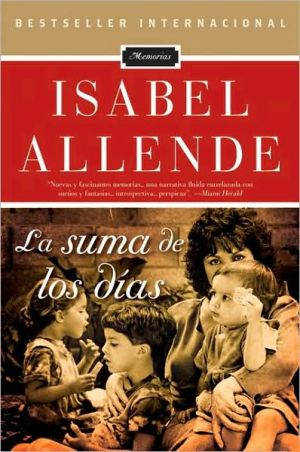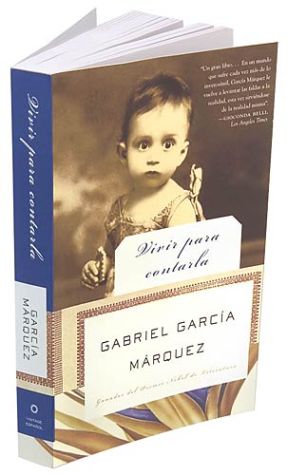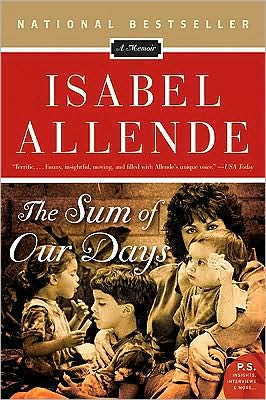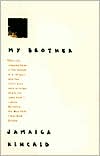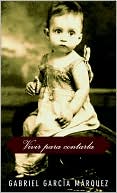The Myth of Jose Marti: Conflicting Nationalisms in Early Twentieth-Century Cuba
Focusing on a period of history rocked by four armed movements, Lillian Guerra traces the origins of Cubans' struggles to determine the meaning of their identity and the character of the state, from Cuba's last war of independence in 1895 to the consolidation of U.S. neocolonial hegemony in 1921. Guerra argues that political violence and competing interpretations of the "social unity" proposed by Cuba's revolutionary patriot, José Mart, reveal conflicting visions of the nation—visions that...
Search in google:
Guerra analyzes the political struggle for Cuban national identity through the differing ways activist factions appropriated the words and images of Cuban patriot and writer José Martí (1853-1895). She argues that political violence and competing interpretations of the "social unity" proposed by Martí reveal conflicting visions of the nation--visions that differ in their ideological radicalism and in how they cast Cuba's relationship with the United States.
The Myth of Jose Marti\ Conflicting Nationalisms in Early Twentieth-Century Cuba \ \ By Lillian Guerra \ The University of North Carolina Press\ Copyright © 2005 The University of North Carolina Press\ All right reserved.\ ISBN: 0-8078-2925-0 \ \ \ \ Chapter One\ Mystic, Messiah, and Mediator Interpreting Marti through Texts and Contexts \ On June 8, 1899, Juan Bonilla, a cigarmaker and member of the all-black reading circle La Liga Antillana, wrote an impassioned letter to his friend and fellow activist Juan Gualberto Gomez. Peppering his letter with direct quotes from Jose Martis writings, Bonilla recounted how Marti; had personally inspired him to pursue ideals of truth and justice, especially through the readings he recommended to La Liga, a list that included Renan's Life of Jesus and works by Emerson and Seneca. However, Bonilla's purpose in writing Gomez was more than commemorative. He wanted him to know that despite Marti's death, Bonilla and other Cubans could continue to receive Marti's counsel, even from beyond the grave.\ Since the early months of the U.S. military intervention of 1898, Bonilla had been conducting an "investigation" into the spiritist movement among New York City's Cuban emigres. Like all spiritists, emigre adherents sought to prove the immortality of the soul by using the "scientific" methods of spiritism's founder, Allan Kardec. After attending countless seances, Bonilla had received several important messages from figures such as Jose and Antonio Maceo, as well as Marti. Cynically, the spirit of Jose Maceo characterized Cubans' current attitudes toward the U.S. occupation as "identical to those of Zanjon, in '78." However, the spirit of Marti insisted that all of Cuba's dead heroes were working ceaselessly "to save Cuba," even if it appeared that "in the end, [the United States was] going to take her." Bonilla concluded that Cubans' only hope was to found a political party modeled on the PRC and the example of leadership provided by Marti, a man who, like Jesus himself, prophesied his own immortality. Bonilla insisted, "What matters about these investigations is that all [our deceased leaders] agree that the only way to save Cuba is through the strictest unity of all its elements. Our dead ask only for Unity, and predict a fortuitous future for Cuba if only we can achieve this first triumph."\ Written four years after Marti's death, Bonilla's testimony colorfully illustrates how many popular nationalist revolutionaries closest to Marti; regarded his legacy. A mystic who meditated on the meaning of liberation, Bonilla's Marti; was also an earthly messiah who had managed to make the impossible possible. Through the structure of the PRC and the goal of absolute independence, Marti had united Cubans whose class interests, cultural values, and historical experience could not have been more distinct. By the time of his death in 1895, these multiple dimensions of Marti's image had already begun to fuse into a myth of social unity based on conflicting ideological meanings.\ In the early 1890s, the intricate weaving of popular nationalists' support for Marti into the preparatory and governing structures of the Revolution made their demands for social justice practical and discursive foundations of Cuba's struggle for liberation. Marti's willingness to embrace the radical visions of nation that working-class emigres imagined and the central role that themes of historic sin and future redemption for all Cubans, rich and poor, played in PRC discourse and policies were critical. Marti's strategies for achieving social unity behind the drive for war not only made the solutions to racial and class inequality in Cuba feasible but, more important, they also made the problem of inequality itself impossible for conservative nationalists to ignore. Marti's efforts to embody and perform the messianic ideals of self-abnegation, mediation of differences, and material denial for the sake of a collective end created the basis for his mythification as a national icon of unity and a symbol of Cubans' commitment to the goal of a nation, however defined. By the time of Marti's death at the outset of the revolution in Cuba, his apotheosis as a national myth of unity may have been unavoidable. Later, Marti's image would become the mantra by which many popular nationalists asserted their legitimacy and made demands within a movement that increasingly sought to channel them away from the institutional centers of power. To justify such actions and defend their own authority, pro-imperialist and revolutionary nationalist leaders had to respond to strident reminders of the mystical, messianic, and mediating Marti in order not to lose their own legitimacy in the wake of idealized memories of the past.\ Most previous assessments of the appropriation of Marti have located Cubans' "discovery" of him in the 1920s, relegating it to the activities of a few intellectuals and radical activists whose excavation of Marti's writings made his ideas widely known to a national audience, ostensibly for the first time. Despite a flurry of new interpretations of Marti's work and influence in the last few years, it is easy to see why this view has endured. Spanish censors, high rates of illiteracy, and the popularity of other leaders with more radical social credentials such as Antonio Maceo make it impossible to say exactly how extensive Marti's popularity or knowledge of him may have been among Cubans during and after the 1895 War. However, as we shall see, political elites and diverse social groups of Cuba's popular classes consistently appropriated Marti's image through the early Republic. Rooted in an analysis of Marti's own social reality, this chapter explores how Marti himself worked hard to make his message and his own image appeal to groups with contrary interests, different ideological sensibilities, and ultimately, distinct nationalist goals, especially among his own emigre communities in the United States. This analysis lays the groundwork for explaining why Marti's image and discourse of social unity became signifiers of conflicting visions of nation after his death and over the course of the early Republic.\ This chapter argues that Marti crafted a message of liberation and revolution within his own peculiar emigre context that could be and was meant to be interpreted in more than one way. He also made conscious efforts to exemplify that message symbolically in his own life and actions. Marti's brilliance lay in his ability to convince Cubans, of opposing class interests and perspectives on questions of social equality, that they could find their "true" selfless selves and seek their country's historical redemption from a colonial, slave-holding past in the cause of independence. Central to Marti's appeal was his willingness to allow his listeners, observers, and readers to draw their own conclusions to the dilemmas that his denunciations of Spanish colonialism set up. In the process, Marti, consciously and unconsciously, confirmed the right of all Cubans to interpret the nation for themselves and to shape, consequently, their own interpretation of Marti.\ Race, Class, and the Problem of Equality\ In a context of divided perceptions and indeterminate outcomes, Marti's discourse and practice emerged as a product of specific needs. In practical terms, Marti needed to bring together under the leadership of a single party the thousands of emigres who had left Cuba for economic or ideological reasons to settle in the United States. And he needed to link the emigre movement to the military enterprise of socially radical and prestigious generals such as Antonio Maceo, Enrique Collazo, and Maximo Gomez who lived in exile elsewhere. In ideological terms, Marti had to make the Revolution acceptable to both the popular-class emigre groups and those who would do the bulk of the fighting in Cuba. But he also needed to retain the support of professional and intellectual elites who would govern its finances and represent the war diplomatically. For Marti, the question of how to attract and keep the support of all groups was just as important for the short-term, for the organization of the Revolution, as for the long-term, for the organization of a Republic "with all and for the good of all." Marti recognized how easily the scale of social forces could be tipped out of balance in both the Revolution and the Republic and warned his readers, comrades, and audiences of the need to keep these forces in balance. If Cubans did not do so, the Revolution would collapse as it had done before. Worse yet, neglecting the social balance in the Republic would lead to an authoritarian government, U.S. domination, or the kind of social chaos Marti perceived as dictating the history of Cuba's sister republics in Latin America.\ As laden with overt messianic images as it was riddled with silences on the question of future government policies, Marti's carefully crafted and often circuitous discourse avoided precision and practicality in discussing just how a newly founded republic might mitigate the social, class, and racial extremes that defined the colony. Through the top-down structures of the PRC and his own paternalistic leadership style, Marti ensured that ideological differences among potential constituents and the implications that these differences held for the social and political order in the Republic would be neutralized rather than aired. The discursive silencing of key differences served as temporary and symbolic sacrifices of personal and sectoral interests for the sake of unity. By articulating a collective patriotic consciousness in which all might share, Marti himself insisted that building social unity through the symbolic inclusion of all needs and interests in the war could form the basis for their negotiation in the Republic. At the center of these needs and interests stood the former breaking points for Cuba's earlier independence wars, principally, the issues of class privilege and race inequality.\ Marti talked and wrote incessantly about the insignificance of race and the impossibility of racial hatred among Cubans while, at the same time, silencing the reality that issues of race and persisting racial hatred remained primary obstacles to both social unity and social peace. As Ada Ferrer points out, Marti represented a general trend among white separatist writers at the time. As a group, these writers glossed slavery as a sin for which white Cubans had already been redeemed and whose legacy black Cubans had already overcome-all because of the first struggle for independence, the Ten Years' War. Ferrer asserts that revolutionaries of 1895 brought to fruition an "ideology of raceless nationality" that was long in the making. This ideology was, in part, the product of efforts to construct a viable counterdiscourse to Spanish campaigns that exploited racial fears and discredited independence as leading to a "race war." But it was also, in part, an expression of what she considers Marti's exceptional perspective on "racial equality" and his courage in fomenting that view among supporters. Ferrer contends that the language and concept of "raceless nationality" allowed white revolutionaries to insist that the transcendence of race had already occurred even as black revolutionaries insisted that the contrary was still true.\ Most analysts of the 1895 War and readers of Marti have long insisted that Marti called for "racial equality" and that this tenet formed an ideological pillar of the Revolution of 1895. And yet, Marti's efforts to attract and then balance radical and conservative forces within the movement meant that while he included socially marginal groups symbolically, he did not necessarily endow these groups with the same structural authority within the PRC that he offered their conservative, wealthier, and formally educated counterparts. Whatever his commitment to improving the condition of socially marginal sectors may have been in the long run, Marti drew his closest associates within the PRC, such as pro-imperialist nationalists Tomas Estrada Palma and Gonzalo de Quesada (both of whom were U.S. citizens), from the conservative ranks of emigre society. However, even as he denied openly radical black activists such as Rafael Serra y Montalvo from leadership in the PRC, Marti acted the part of social democrat whenever the chance presented itself. His efforts apparently succeeded. Popular nationalists recognized the value of Marti's strategy and appreciated his efforts to include as equally valuable. Perhaps the best evidence of this came after his death, when popular nationalists increasingly referred to Marti's personal style in order to evaluate the ideological attitudes and political worth of his PRC successors.\ An 1896 letter written by Nestor Carbonell, an emigre leader from Tampa, provides a case in point. Criticizing the social elitism of the PRC's national delegates, Carbonell cited Marti's contrasting actions as testament to the fact that Marti would never have tolerated such attitudes: "When Marti would arrive from his long trips from the North and from the South, the home in which he would stay was that of the black woman Paulina in Tampa. Without waiting enough time for anyone to find grounds for complaint, he would take the coach and alone or accompanied, he would go to visit those homes where he could be seen by Cubans who otherwise might not be able to visit him.... What politician ever more exemplary?" Ignoring the fact that Marti was himself responsible for these delegates' appointments, Carbonell insinuated that if Marti had only lived, he would have appointed Carbonell to the governing council of the PRC instead.\ Of course, Marti's actions acquired greatest significance in light of his words. Understanding the circuitous writing style and contradictory discourse on which Marti relied for broad and, at other times, specific political ends involves analyzing the resonance and dissonance between his public versus private correspondence. In doing so, one finds that no such terms as "racial equality" or even "social equality" ever appeared in Marti's writings, speeches, or correspondence (whether public or private). Given that black and mulatto intellectuals close to Marti did not hesitate to use such direct terminology in their own writings, and that Marti himself supported the work of their organizations, the omission is striking and revealing.\ One such example of a mulatto intellectual was Juan Gualberto Gomez, a longtime friend of Marti. Gomez had known Marti since his days in the Havana law firm where Marti worked upon returning to Cuba from exile in 1878 until separatist activities prompted Marti's expulsion once again. Renowned for his successful litigation in the Spanish supreme court during the late 1880s of cases favoring the racial desegregation of public schools and nondiscrimination in public places, Gomez founded and directed newspapers committed to the "defense of the general interests of the people of color" in Cuba.\ \ Continues...\ \ \ \ Excerpted from The Myth of Jose Marti by Lillian Guerra Copyright © 2005 by The University of North Carolina Press. Excerpted by permission.\ All rights reserved. No part of this excerpt may be reproduced or reprinted without permission in writing from the publisher.\ Excerpts are provided by Dial-A-Book Inc. solely for the personal use of visitors to this web site. \ \
Introduction : multiple nations, multiple Martis, 1895-19211Ch. 1Mystic, messiah, and mediator : interpreting Marti through texts and contexts23Ch. 2Revolutionizing Cuba Libre, civilizing the Manigua, 1895-189847Ch. 3Cuba Libre in crisis : the origins of U.S. imperial hegemony, 1898-190289Ch. 4From revolution to involution : conflicting nationalisms at the crossroads of race and class119Ch. 5Political violence, liberal revolution, and the martyrdom of Marti, 1904-1906153Ch. 6Perceiving populism in a U.S. imperial context : the paradox of popular nationalist struggles, 1906-1909193Ch. 7Dependent nationalisms, the stillbirth of the Republic, and struggles over the myth of Marti, 1909-1921223Conclusion : lessons of the early Republic and the transcendence of the myth of Marti255
